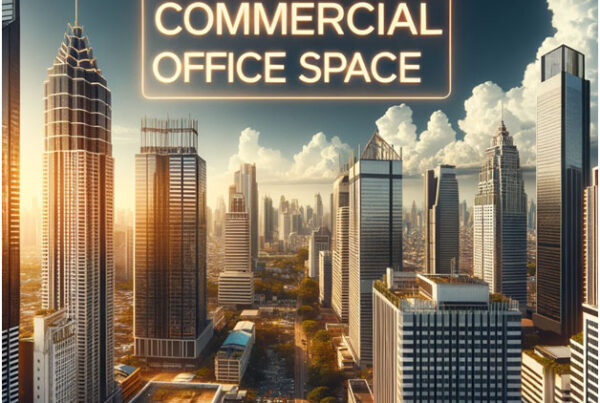
By Pat Friedman-Bobker
Turning your commercial business environmentally friendly has never been more en vogue than it is today. But going greener is much more than being trendy, it’s essential. Not just to the earth, but to your bottom line. Beyond the money that you start saving immediately by conserving at the workplace, you also draw more savvy, long-term customers. More buyers are choosing businesses that distribute and promote goods made with sustainably obtained materials, processes and practices. Whether your company has been at it for decades, or just getting started down the primrose path, these points will streamline your efforts, maximize returns, and impress your customer base. . . all while helping a fragile planet.
Purchasing Choices:
Every business professional knows that not only does it cost more money to purchase an item new, but it’s a greater ecological liability – starting with the extraction of raw materials to build it – leading up to the mark it leaves when it’s disposed. In the interim, why not re-use whenever possible? The EPA puts it in pretty straightforward terms. You not only save money by reusing all that you can, but “the most effective way to reduce waste is to not create it in the first place.” Select used, recycled, repaired or borrowed items for use company-wide. Make it easy for employees to do the right thing every day, by brewing coffee without disposable pods, cups, or straws for example. Purchased items that come heavily packaged should start coming from companies using more enviro-friendly packaging and manufacturing. (1)
It’s also very cool to partner with groups like Habitat for Humanity – which buys and sells the spectrum of reusable building materials plus sundry objects and office furniture, even wall art – they also worthily accept donations of building objects or funds which enable them to not only provide those materials and products for your use, but also to build homes with new homeowners needing a bit of help. That is a rare win-win-win with a great track record.
Recycling Policy:
“Without exception, recycling is the top action society can do to simultaneously improve the environment, the economy, sustainable manufacturing and to prevent waste from going into oceans.” (3) When someone casually tosses a recyclable item in the trash – or vice versa – it may not seem as dramatic as the staggering end results. Since 1960, total U.S. municipal waste has more than tripled, with only a fraction being recycled and composted. The total generation of municipal solid waste, MSW, aka trash or garbage, was 292.4 million tons or 4.9 pounds per person per day. Of the MSW generated, nearly 70 million tons were recycled, and 25 million tons were composted. Together, that totals only 32.1 percent. And more than 146 million tons of Americans’ trash (50 percent) was landfilled. (2)
Since the average person still ditches 5 lbs. of trash daily, one solution comes from Darby Hoover, an NRDC senior resource specialist. “People need to familiarize themselves with community guidelines.” What you can recycle at the workplace (takeout containers? direct mail?) and how you should do it (curbside? drop-off centers?) varies greatly. See your town/city website FMI about your local recycling and composting rules and options. (3)
H2-OH!
Water, water everywhere is seeping money along with waste, hiding in plain sight. Sinks and toilets may easily have slow leaks that are simple to find and repair. The caveat to having running water, is that you pay for it coming in and going out. Then the earth pays for the depletion and the waste. The less you use, the more you save. Two-fold. And freshwater is not as readily a renewable natural resource as was once believed. Simple signage solutions in even the tiniest company kitchen and bathroom areas remind people to use much less water. It’s a core business concept: if you don’t ask, you won’t get. Companies like American Standard and others showcase their water-efficient sinks, toilets, and bathroom products for sale.
Of the 322(+/-) billion gallons of water drawn for use in the U.S. every day, a seemingly low 12% is for public use – including all domestic, commercial, and industrial use. Taking the “pie” is largely irrigation (188 billion), and thermoelectric power (133 billion) gallons used per day.(5) But it’s all relative; those 32 billion gallons you use at home and work constitute the places you and your colleagues can make the greatest relative difference. Besides, it just feels good!
Common Mistakes: A growing issue is the vast array of contaminating, non-recyclable materials such as Christmas lights, diapers, and hoses which are astonishingly tossed with recyclables; items that contaminate and can catch in the sorting equipment and trip up operations for recycle experts, according to USA Today and other reports. For personalized Q&A support on the subject, or to help advance your company’s “waste diversion goals and to support a society-wide standardized label solution for recycling bins,” shoot an email to info@recycleacrossamerica.org.
Not easily overlooked is the massive e-waste problem that surrounds you. Every year, Americans improperly dump computers, other electronics, and components replete with heavy metals that easily find ways into the environment, and our bodies, leading to cancer and other severe health problems, along with infrastructure deterioration, acid rain formation, corrosion, and more. (6) According to companies like Green Earth, which specializes in mitigating waste in all business sectors, they will ‘help you limit the environmental impact of your business, organization, or municipality’s electronic waste.’ These actions position you for another triple-win: between first users, second users/participating nonprofits, and Planet Earth.
Company-wide Compliance: Companies with employees that green together, stay together. It’s a top-down thing: when management makes wise decisions, it’s easier for staff members to join in. Incentives for employees to walk, bike, carpool, or use public transit to work, as opposed to driving individually, is one way your business can spare the environment and look good in your company profile, social media and P.R. opportunities. Motivate your employees to faithfully and correctly use clearly marked recycling bins, and compost if possible. Anything that was once living is compostable. Reminders will keep folks engaged: every sheet of paper has two sides. So every employee should have a bin handy for second-sided paper for internal use. Just the savings on paper alone will energize management to save a proverbial tree. Remember, incentives always get staffers stoked – the “catch them doing good” technique never carried so much water.
https://www.nrdc.org/stories/recycling-beyond-bin (3)
https://pubs.usgs.gov/fs/2018/3035/fs20183035.pdf (4)
https://www.recycleacrossamerica.org/recycling-facts (5)
https://www.sciencedirect.com/science/article/pii/S2405844020315346 (6)
Featured Image Credit: OpenClipart-Vectors / Pixabay




